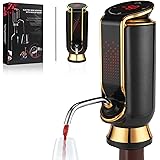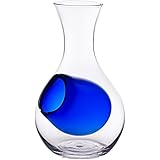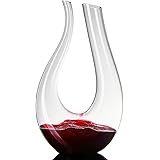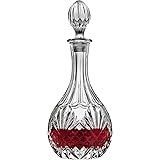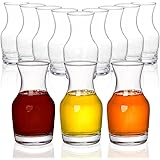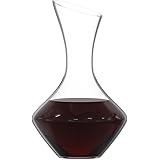Are you ready to truly decipher the intricate world of Bordeaux wine, moving beyond the foundational insights presented in the video above? While the video provides an excellent Bordeaux wine overview of maps, grapes, and labels, a deeper dive reveals the profound complexities and historical significance that define this iconic French wine region. Understanding Bordeaux requires appreciating its unique confluence of geography, tradition, and meticulous classification systems, which shape every bottle produced.
This legendary wine country, bisected by the Gironde Estuary, has captivated oenophiles for centuries with its diverse terroirs and renowned blends. From the robust, age-worthy reds of the Left Bank to the opulent, velvety expressions of the Right Bank, Bordeaux offers a spectrum of experiences for every palate. Delving into the nuances of its appellations and classifications will unlock a more profound appreciation for the expertise embedded in each vineyard and cellar.
The Pivotal Geography of the Bordeaux Region: Terroir at its Core
The strategic location of the Bordeaux region along the 45th parallel north is not merely a geographical marker; it is a fundamental pillar of its viticultural success. This latitude is celebrated globally for housing many of the world’s most distinguished wine regions, including parts of the Rhône Valley, Piedmont, and the Willamette Valley. The moderate maritime climate, heavily influenced by the Atlantic Ocean, provides the ideal conditions for grape cultivation, ensuring a long growing season and consistent ripening.
However, the true heart of Bordeaux’s identity lies in its intricate river system. The Garonne and Dordogne rivers converge to form the vast Gironde Estuary, effectively dividing the region into its famed Left Bank and Right Bank. This geographical split dictates not only the dominant grape varietals but also the signature wine styles, presenting a fascinating study in viticultural adaptation and expression.
Left Bank Bordeaux: The Realm of Cabernet Sauvignon
The Left Bank, situated to the west of the Gironde and Garonne rivers, is characterized by its deep, well-draining gravelly soils. These ancient riverbeds, deposited over millennia, force vine roots to dig deep for water and nutrients, contributing to the concentration and complexity of the grapes. This unique pedological profile provides excellent drainage and retains warmth, which is crucial for the full maturation of Cabernet Sauvignon.
Consequently, Left Bank Bordeaux wines are predominantly Cabernet Sauvignon-based blends, frequently complemented by Merlot, Cabernet Franc, Petit Verdot, and sometimes Malbec. These blends are celebrated for their structural integrity, firm tannins, and aromas of blackcurrant, cedar, tobacco, and graphite. Famous appellations such as Médoc, Haut-Médoc (which encompasses Pauillac, Saint-Julien, Margaux, and Saint-Estèphe), and Graves (including Pessac-Léognan) exemplify this classic style, producing wines renowned for their longevity and elegance.
Right Bank Bordeaux: The Domain of Merlot Opulence
Conversely, the Right Bank, east of the Dordogne River, features soils rich in clay, limestone, and iron-rich subsoils. These cooler, heavier soils retain moisture more effectively than the Left Bank’s gravels, creating an environment where Merlot thrives. Merlot, a grape that ripens earlier and prefers these moisture-retaining conditions, forms the backbone of Right Bank Bordeaux wines.
These Merlot-based blends often incorporate Cabernet Franc and, to a lesser extent, Cabernet Sauvignon, yielding wines that are typically softer, rounder, and more immediately approachable than their Left Bank counterparts. They present luscious fruit flavors of plum, black cherry, and raspberry, often accompanied by notes of chocolate, spice, and truffle. Iconic appellations like Pomerol and Saint-Émilion are the shining stars of the Right Bank, revered for their rich textures and aromatic complexity, which mature gracefully over time.
Entre-Deux-Mers: The White Wine Haven
Nestled “between two tides”—the Garonne and Dordogne rivers—lies Entre-Deux-Mers, an appellation exclusively dedicated to dry white wines. In contrast to the region’s dominant red production, this area’s clay-limestone soils are ideally suited for white grape varietals. The climatic conditions here also favor the crisp acidity and aromatic expression sought in high-quality dry whites.
The wines of Entre-Deux-Mers are typically refreshing blends of Sauvignon Blanc and Sémillon, often with a touch of Muscadelle. Sauvignon Blanc contributes vibrant citrus and herbaceous notes, while Sémillon adds body, texture, and hints of lanolin or honey as it ages. These bright, aromatic wines offer a superb counterpoint to Bordeaux’s powerful reds, providing excellent value for discerning consumers.
The Layered Bordeaux AOC System: Navigating Appellation D’Origine Contrôlée
The Bordeaux AOC system is a hierarchical structure designed to guarantee the origin, quality, and style of its wines, mirroring France’s broader Appellation d’Origine Contrôlée framework. Understanding these tiers is paramount for deciphering a Bordeaux label and appreciating the stringent regulations behind each bottle. From broad regional designations to highly specific commune appellations, each level imposes distinct viticultural and winemaking rules.
At the base, the generic “Bordeaux AOC” permits grapes from any part of the vast region, with minimal production constraints. This flexibility allows for a wide range of styles and often represents excellent everyday drinking. Moving up, “Bordeaux Supérieur” demands stricter vineyard management, lower yields, and a minimum alcohol level, often indicating a step up in quality and aging potential, though grapes still originate from anywhere in Bordeaux.
The true prestige and specificity emerge at the commune and sub-regional AOC levels, where geographical boundaries are precise and quality controls are most rigorous. These include appellations like Médoc, Haut-Médoc, Graves, Saint-Émilion, and Pomerol, each with their own unique terroir-driven characteristics. The video mentioned 65 different AOCs, and each one tells a story about its specific climate, soil, and traditional grape blend, creating a tapestry of diverse wine profiles across the region.
Beyond Appellations: Understanding Bordeaux Classifications
While AOCs define geographical origin, classifications serve as an additional layer of quality recognition, often based on historical prestige or established reputation. These classifications are crucial for comprehending the hierarchy and market value of many Bordeaux wines.
The 1855 Classification: A Historical Benchmark
The most famous and enduring classification is the 1855 Classification of the Médoc and Sauternes, created for the Exposition Universelle de Paris. This system ranked 61 red wines from the Médoc (plus one from Graves, Château Haut-Brion) into five growths (Crus Classés), with the top tier being the Premiers Crus (First Growths). The five First Growths are Château Lafite Rothschild, Château Latour, Château Margaux, Château Haut-Brion, and Château Mouton Rothschild (elevated in 1973). This classification remains largely unchanged, despite its age, reflecting the exceptional and consistent quality of these estates.
For sweet wines, the 1855 classification also recognized the superior quality of Sauternes and Barsac, notably designating Château d’Yquem as the sole Premier Cru Supérieur. These luscious dessert wines, often Sémillon-based, are famous for their production method involving *Botrytis cinerea*, or noble rot. This fungus dehydrates the grapes, concentrating sugars, acids, and aromatic compounds, resulting in wines with unparalleled complexity and honeyed richness, ideal for profound gastronomic pairings.
Other Notable Classifications: Cru Bourgeois and Saint-Émilion Grand Cru Classé
The Cru Bourgeois classification, specifically for Médoc wines not included in 1855, offers a regularly reviewed quality assurance system. It provides a valuable guide to estates consistently producing high-quality wines, offering a more dynamic assessment of merit. This classification is revised periodically, promoting ongoing excellence among participating châteaux.
On the Right Bank, Saint-Émilion employs its own distinct classification, dating back to 1955. This system, unlike the fixed 1855 ranking, is reviewed roughly every ten years, allowing for demotions and promotions based on recent performance. It ranks estates into Premier Grand Cru Classé (A and B) and Grand Cru Classé, reflecting a commitment to current quality and relevance. Hypothetically, imagine an estate consistently investing in vineyard management and cellar technology; this dynamic system acknowledges such dedication, allowing a potential upgrade in status.
Deciphering Bordeaux Labels: A Connoisseur’s Map
Reading a Bordeaux wine label is akin to unlocking a code, with each element providing critical information about the wine within. Beyond the château name, which identifies the producer, the appellation is the most vital piece of geographical data. For instance, seeing “Haut-Médoc AOC” immediately informs an experienced enthusiast that the wine is from the Left Bank and likely a Cabernet Sauvignon-dominant blend, possessing specific structural characteristics.
Conversely, a label bearing “Saint-Émilion AOC” signals a Right Bank origin, pointing towards a Merlot-based blend known for its plush texture and fruit-forward profile. When a classification, such as “Cru Bourgeois” or “Grand Cru Classé,” is present, it signifies an additional layer of quality assurance. The vintage, clearly displayed, informs about the specific year of harvest, which is crucial in Bordeaux due to vintage variation. Furthermore, terms like “Mis en Bouteille au Château” confirm the wine was estate-bottled, indicating the producer had full control from grape to bottle, often a sign of higher quality and authenticity.
Seeking Value in Bordeaux: Beyond the Grand Crus
While the classified growths garner significant attention and often command premium prices, Bordeaux offers a wealth of exceptional value wines for those willing to explore. The Côtes de Bordeaux appellations—Blaye, Cadillac, Castillon, Francs, and Sainte-Foy—are superb sources of approachable, well-crafted wines across various styles and colors. These regions, often overlooked, produce a diverse range of red, white, and rosé wines that express excellent typicity of the Bordeaux terroir without the hefty price tag associated with more famous names.
Delving into lesser-known communes, such as Fronsac or Canon-Fronsac on the Right Bank, can also yield fantastic discoveries. These areas produce Merlot and Cabernet Franc-dominant wines that offer similar characteristics to their more celebrated neighbors like Pomerol, but at a fraction of the cost. The key to finding these gems lies in understanding the broader geographical and stylistic divisions of Bordeaux wines and being open to exploring regions beyond the iconic châteaux.


